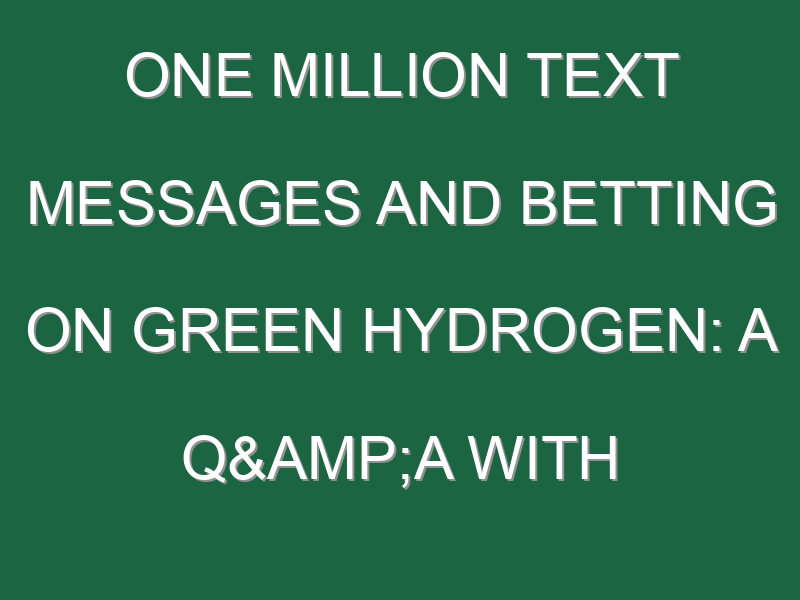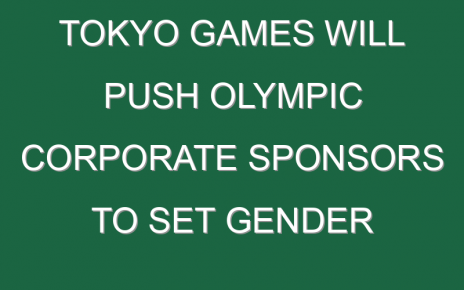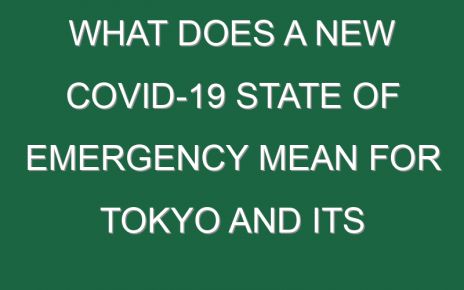Elizabeth Gaines, the CEO of Fortescue Metals Group—and No. 5 on Fortune’s Businessperson of the Year list in 2020— has had a career that’s about as varied as they come.
The Australian executive began her career as a chartered accountant before moving on to work at an investment bank in London and other financial institutions. At the age of 37, she became the CEO of Heytesbury, then one of Australia’s largest private companies with an eclectic portfolio of businesses that included a West End theater company in London, Australia’s largest live cattle operation, and a large construction company.
Her husband’s career took her back to London, where she became the finance director for a UK-based media company and did much business in New York. She then returned to Australia to work in private equity, where she gained more international experience, focusing on assets across the travel and hospitality industries. In 2013, she became the first woman to join the board of Fortescue, an Australian iron ore miner that has had a meteoric rise over the past decade or so. In 2017, she joined the mining company’s executive team as CFO, and in 2018, she became its CEO.
Her three years at the helm have been impressive enough to land her on Fortune’s annual list of top business leaders twice. Most recently, even amidst a global pandemic and fast-souring relations between Australia and China (Fortescue’s main export market), the 17-year old iron ore producer posted record-breaking operational and financial results in its 2020 fiscal year (which ended in June).
Gaines, who also ranked No. 17 on this year’s Fortune’s Most Powerful Women International list spoke with Fortune recently about leading her company through the pandemic with humanity (and without shuttering operations), why she’s betting on green hydrogen, and what is changing (an urgent focus on climate) and what isn’t (the underrepresentation of women leaders) in the world of business.
So, 2020?
It’s been an interesting year. I don’t think any of us would have anticipated this. We’ve continued to perform—I put that down to our culture and diverse workforce and there’s a strong market, so a combination of those things.
When did the coronavirus first come on your radar?
We have an office in Shanghai, so we first started dealing with coronavirus last January, when some of our team members who, because it was Chinese New Year, had traveled to various parts of China. As the virus spread there, they were in areas of lockdown, so our team members were impacted. We’d been dealing with that and supporting them and supporting our customers in China. We actually donated a million dollars to support the conversion of a sports stadium in Wuhan to a COVID Recovery Center, so it came on our radar early.
Then as we started to recognize it was going to hit Australia as well, we progressively made a number of decisions.
Tell us about that.
We are a mining operation. Most of our mines are in remote areas, we have a lot of fly in-fly out workforce. They fly in for the two-week shift and then they have a week R&R. Managing people and the movement of people and the measures we’ve had to put in place has been pretty extraordinary. We had to extend rosters from someone with up to four weeks on, two weeks off. Four weeks on is quite a big challenge—you’re four weeks away from your family.
We did that because it reduced the movement of people by around 40%. Of course, the way disease spreads is through people moving so we made that decision so that we could slow down the movement of people. And then we put in place a range of hygiene measures—we had to change our mining village facility to close some of the dining and other services and make it takeaway rather than have people gathering. We had to change the way we dealt with their flights [for] physical distancing on flights. It was a comprehensive.
I think one of the things about the mining sector is we always have these sort of safety plans in place, not just in response to infectious disease management. As an industry, we actually banded together. There’s quite a significant resource industry here in Western Australia and we have industry bodies. We met regularly with the state government, with the premier of Western Australia and his ministers to have ongoing dialogue about how to keep the mining sector operating. Interestingly enough, Australia’s economic situation is far more robust than I would say most other countries globally because the mining sector has continued to operate. The West Australian government here has just returned a budget surplus, and they will be the only state in Australia to return a surplus this year. That’s solely due to the role that they’re receiving from the mining sector. So we have literally kept Australia going.
Have you had any outbreaks at your operations?
We haven’t had one case. Obviously there has been community spread of cases in Australia, not so much in Western Australia, more in Victoria, which had a fairly severe lockdown for quite a long period of time. There were cases in Western Australia but we don’t have any on our mining sites, and I think that’s because of the measures we put in place.
Communication was key to your strategy in managing COVID-19. Can you talk about that?
Our management team, we met twice daily, seven days a week, for a long period of time. And we still meet regularly but not as regularly. Things were changing quite rapidly and as we started to see new measures being introduced and our government was introducing certain restrictions, we wanted to keep in step with those restrictions. We realized that just relying on the usual kind of email messages probably wasn’t going to quite get there because often our workers will be off shift. They’re on R&R, they’re not actually on site. We quickly realized that text messages were one of the best ways—a short SMS to people to say, now we’re updating our flight schedules or we’re introducing a roster change. We’ve sent over a million text messages since March. I think one gentleman mentioned that he’d had more text messages from me in the last few months than he’s had from his wife in 20 years of marriage. You can’t over-communicate in these circumstances. You really have to keep people informed.
At the heart of the pandemic, when we had to change some of our flight schedules. I’d go out to the airport—our flights generally go at very unpopular hours, like 4 a.m. So you go out to the airport early in the morning, and you can greet people, and have a conversation with them just to make sure they realize that they’re an important part of the team. We want to make sure that they feel supported. The combination of the human interaction, SMS messages, and then video content. We have weekly town hall meetings—video is available for people to watch, so we do spend a lot of time and effort communicating.
Given the pandemic began in China, your main export market, were you expecting record-breaking results this year?
We actually ran through a number of scenarios that you would expect. The remarkable aspect of this is the recovery in China. Despite the fairly significant lockdowns very early in the year, China dealt with this pandemic in a very managed and methodical way and actually got back to business very quickly. So what we’ve seen is a significant increase in crude steel production. And obviously, we’re a major iron ore supplier, and the strength of China’s recovery has been, I think, truly outstanding. We’ve seen increased demand for iron ore, and that has supported the current iron ore price, which has been at a higher level for some time now.
Crude steel production is one indicator of the strength of the [Chinese] economy. And that’s up four and a half percent for the nine months to the end of September, with China producing about 780.2 million tonnes of crude steel. They’re on track to exceed a billion tonnes of crude steel production this calendar year.
We did see other iron ore producing nations were impacted by COVID. South Africa had a complete lockdown including mining. Brazil had some impacts from COVID, not as significant, but I think Australia and Western Australia demonstrated that we are very reliable supplier of key commodities for steelmaking during the pandemic.
So first and foremost, for us, was to continue to operate, which we’ve achieved, and there were other measures we had to put in place. We had to look very closely at our shipping supply, because obviously the movement of ships in and out of ports has been under some scrutiny, and we put measures in place to address that. Against that backdrop, and the very strong performance from the team, we were able to achieve those records. And we’ve seen as a result of that strong demand for iron ore, that’s translated into record financial performance, as well as record operational performance.
Do you expect that strong demand from China to continue?
We have a lot of confidence in the ongoing strength of the Chinese economy, and certainly a lot of that is led through infrastructure investments. There is still quite a long pathway to reach peak urbanization in China. That drive to urbanize the country and transform the economy and lift people out of poverty is to an overarching desire of the Chinese government, and so that tends to mean that there’s further investment in infrastructure, whether that’s new airports or high-speed rail or road infrastructure.
To what do you attribute your record operational performance?
We continue to set ourselves stretch targets, and we’ve got a real culture of delivering against those targets. We’ve integrated our operations, and our mine planning and marketing functions so we’ve got better integration across our whole operational supply chain which I think which has given us better coordination across the whole business.
We’ve increased our capital investment over the last few years in our processing facilities. So we’ve increased sustaining capital, we’ve reinvested back into the business, and we’ve actually started to see the benefits of that investment.
You’ve mentioned Fortescue’s culture. What makes it distinct?
We pride ourselves on being low on bureaucracy, high on empowerment, and values like family, integrity, setting stretch targets, having courage and determination. We have a number of values that really drive people to do things differently, to seek innovation at every opportunity, to really feel empowered as though it’s their Fortescue.
It’s a bit hard to describe until you actually see it, but we literally have no barriers, no, bureaucracy. I sit in an office where everything is open plan. We kind of roll our sleeves up and get on with things.
Fortescue along the way has had it skeptics or people who thought we wouldn’t achieve our first iron ore train, which we did in 2008 or didn’t think we’d get to 170.5 million tonnes of annual production. We have done that, and we’ve repaid our debt—at the peak, we had $15 billion U.S. dollars of debt—and we’ve been very disciplined and repaid debts. Our recent quarterly results were a net cash position of a billion dollars. We’ve been a true entrepreneurial start-up that has achieved quite outstanding results.
I think this year, there’s no greater demonstration of the importance of that culture than with COVID-19. I think if we hadn’t had that culture, we might have had a different outcome.
What’s top of mind for you now?
Safety is always our number one priority. We aren’t out of a pandemic yet, and I think complacency will be our enemy in this. We have to stay focused. That’s not just a Fortescue issue, I think that’s more of a global issue. Australia is in a very different position than he U.S. Our case numbers are very, very low. And the government’s determined to keep it that way.
We’ve had a very strong start to this financial year. We just had our first quarter where we had record shipment—44.3 million tonnes. We have to continue our focus on delivering on that operational excellence. We’ve got two major projects underway or three actually, two iron ore projects and one energy project. One is about to be completed which is the Eliwana mine and rail project, that’s a new facility and a new mining area for us, so the first iron ore train is due in December. And we’ve got another big investment in Iron Bridge, which is a $2.6 billion investment. That’s a significant project for us that is well advanced. We’re about to enter peak construction phase, which is always a time where you got to a very, very focused and mindful of safety and getting things right.
Energy and climate change is a key focus for us… There was a report released this week by Deloitte Access Economics that said that Australia will suffer the economic equivalent of a COVID-19 crisis every year by 2050 if policymakers do not take decisive action now to combat climate change.
We’ve set a goal to reach net zero operational emissions by 2040. That’s a good decade ahead of our competitors, so we’re very ambitious to continue to reduce emissions. We’re backing that up with investment. Our energy project is Pilbara Energy Connect, which is a $700 million investment in large scale, renewable energy and transmission infrastructure—poles and wires incorporating large scale solar and battery storage. Once that’s all completed 25 to 30% of stationary energy will be sourced from renewables.
That’s just the start really. We have to incorporate more renewables, we have to find a way to transition our mobile fleet—these are the large mining trucks, our rail operations, the things that move around. They currently operate on diesel so we have to find the next generation of mining fleet that will move away from diesel and fossil fuels and naturally harnesses renewables.
Australia has the opportunity to participate in the next key export market. Our view is that will be green hydrogen, and so we actually see that there is significant opportunity for energy to be part of our future business—part of our decarbonization, but also a new market for us and a new export market which will assist with diversifying our markets more broadly.
Can you elaborate, how will Fortescue participate in this new market?
We’re an iron ore operator, but we’re also an exporter. We own our own rail infrastructure, we own some of our own ships, we own our own port infrastructure. So we actually manage large scale infrastructure, we develop markets, we develop customers. Hydrogen is in some respects another commodity. You can produce hydrogen from renewables in the Pilbara where we operate—there is plenty of sun and wind and water, so there is no shortage of the elements that you need to produce large scale green hydrogen. And then it’s about the infrastructure and the shipping, and transportation as well as obviously developing customers and markets, which is exactly what we do. We see an opportunity for us to participate through the entire value chain. We’ve got big ambitions, and there’s quite a bit of government support in Australia, both at the federal and state level for these initiatives. I think there’s recognition that hydrogen has the potential to be the next big export commodity for Australia in the same way that iron ore and LNG have been. We’ve got a number of partnerships already announced, and we’re working closely with prospective customers and partners as we develop this this market.
What do you think is the timeline for green hydrogen?
Obviously, there are countries like Japan and Korea that are transitioning away from fossil fuels. Hydrogen has been identified as a significant energy source, so those markets will transition. I think, by the end of this decade, it’s a significant opportunity. That demand will continue to grow during this decade. The focus is on identifying these markets. and these opportunities. We’re working on the technology. The technology exists but it’s getting technology to that bulk scale, and investment is required to achieve this. The investment in this sort of technology is relatively significant. The benefit of the work that we’re doing is it supports not only the development of that export market, but also provides an alternate energy source for our own operations so that we can decarbonize more rapidly.
There are not many women in the mining sector. And what has that been like and how does that affect your leadership?
If you look around the world at some of the good examples of countries in the way they’ve dealt with COVID—New Zealand, Germany—I think what’s demonstrated is this famous view historically that men can take the hard decisions and be more decisive, I think what COVID has demonstrated with female leadership at a political level is that you can be decisive and empathetic at the same time. That’s been a really important reminder seeing how those countries have dealt with the crisis.
Diversity is absolutely key. There’s research that shows that a diverse leadership team leads to better financial outcomes, value creation for shareholders and better innovation, so I’m a firm believer in the benefits of diversity. Certainly, at an Australian level, with the ASX 200, Australian Stock Exchange’s top 200 companies, the representation of female leadership has flatlined. So despite a lot of talk about increasing the gender balance, I’m personally disappointed that over my career, which is 30 years or so now, there doesn’t seem to be much change. We seem to be having the same conversation, which is disappointing because the evidence is there.
In Australia, we’ve seen examples recently of some pretty poor corporate behavior and cultures that have led to various inquiries and people leaving companies over just poor behavior. With greater diversity, you would get potentially a more balanced approach in some of these matters. I’m certainly looking forward to the day when being the only female CEO of a major mining company is not the novelty. But I think we’re a fair way away.
[At Fortescue], 44% of our board are women. We’ve been one of the leaders from a board perspective in terms of diversity. 26%, in our senior leadership roles are women, and across their whole operations, we’re at about 19%. We certainly want to see that continue to increase. We work hard to put settings in place that support men and women. Diversity for me is broader than just gender, it’s ethnicity, as well. And we’ve got such a diverse backgrounds of people across our organization. And that truly to me is what makes us achieve what we achieved.
Beyond Fortescue, what do you see in the sector in terms of diversity efforts?
There’s quite a lot of talk about it, and a couple of the other large companies have certainly have set themselves targets. The resources sector is everything from the large-scale operators like ourselves through to much smaller junior companies. it’s more of the larger companies that we’re seeing real action, and I think some of the smaller companies, maybe, maybe less so. Even lately, external stakeholders aren’t focusing on it as much. There’s not as much focus as I think it ought to be on continuing to encourage companies to push for greater diversity.





